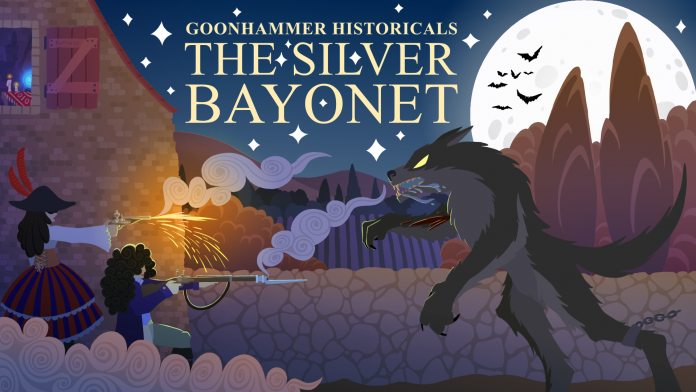Gather your powder, bedrolls, and salt shot and get ready to fight unbelievable gothic horrors in the Napoleonic Wars – it’s time to get started with The Silver Bayonet! This article is intended for those brand new to wargaming, brand new to historical wargaming, or just brand new to The Silver Bayonet. If you’re unfamiliar, please check out our review here.
What is The Silver Bayonet?
The Silver Bayonet is a warband level game (think, 6-8 guys) where you put together, paint, and play with your Napoleonic troops from pretty much any country that participated in the war. It uses individual model activations, alternating between one half of a warband, then the other warband entirely, then one half of the remaining warband. Dice used are entirely D10s. Each model can usually survive being hit 2-3 times.
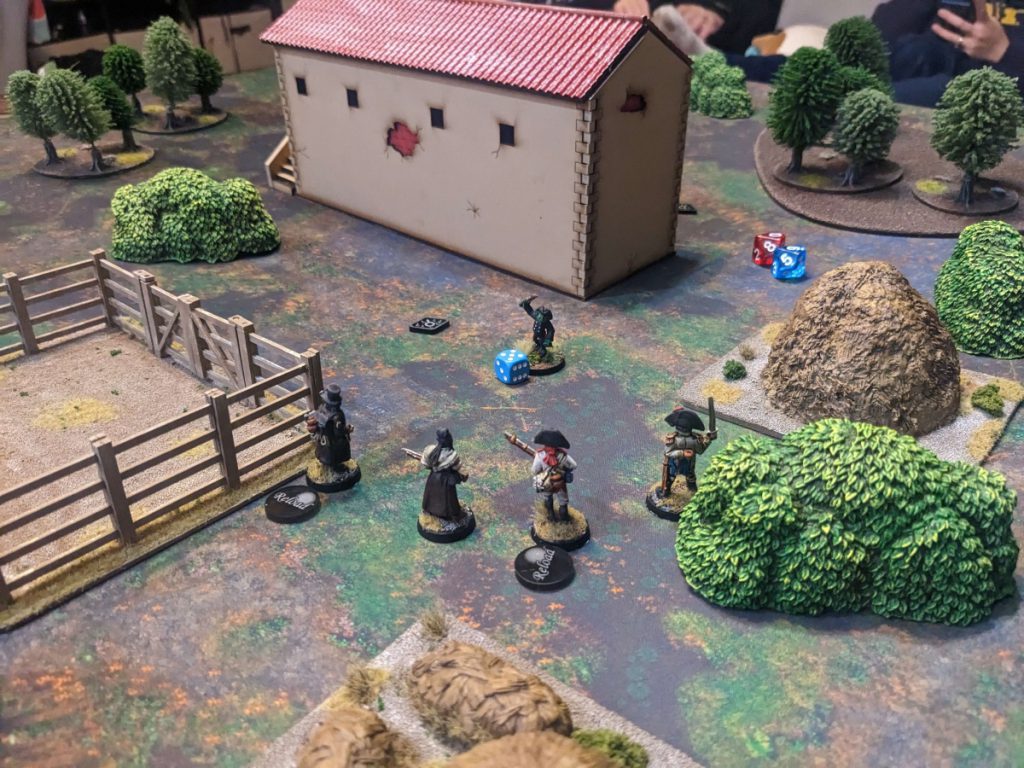
Your warband will go to battle looking for clues, researching, rescuing, stealing, or participating in many other types of activities while trying to fend off enemy warbands. Sharing the battlefield with you and your opponent are a huge variety of insane gothic horror monsters that will attack anyone using a programmed AI in the game rules.
After each game, your guys might be injured, killed, or gain enough experience to advance with better stats. If they die, you can replace them with new guys. It’s a campaign focused game where you and your opponents track what happens and have epic stories to tell. It’s about the closest thing to historical Necromunda that I’ve found.
Why play it?
It’s a great time. You can read our review above but it’s really fun, it’s easy enough to pick up but not just push models and roll dice, and you can track your campaign experience. You get to paint cool Napoleonic uniforms in small numbers while also collecting and painting some sweet vampires, werewolves, bats, rats, zombies, etc. It tells a great story.
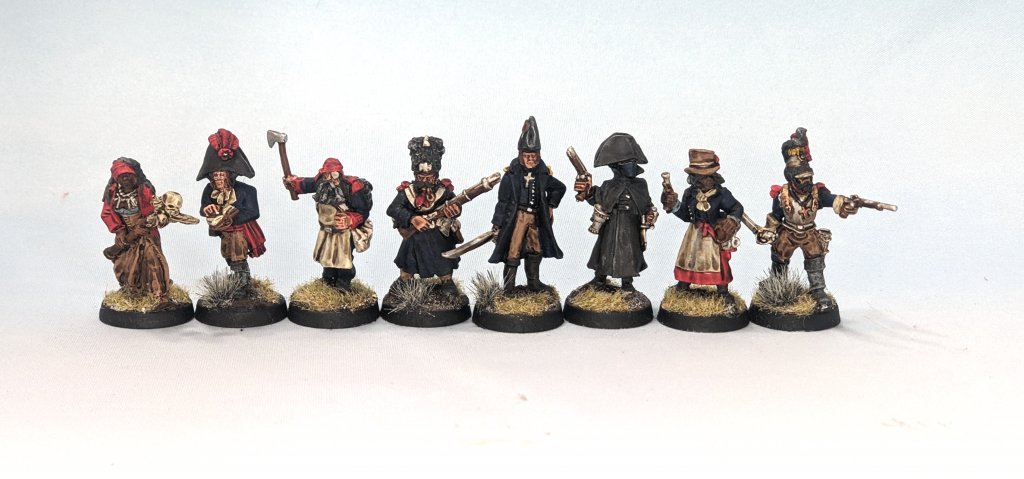
What does a Warband look like?
North Star Military Figures sells warbands that are pre-made with different specialties of soldier included. The author recommends you start with eight soldiers – this is the maximum you can use. Each Nation will have a certain list of soldiers you can choose from. As of writing, the Nations you can choose from are:
- Austria
- Britain
- France
- Prussia
- Russia
- Spain
- USA (War of 1812)
- Upper Canada
- Lower Canada
- Trading Company
Right now there are around 30 different types of specialists, ranging from Artillerist to Werebear. You always start with an Officer leading your unit. Each Officer has a ‘recruitment’ value – it starts at 100 but can go up slightly based on choices you make or advancements later. Each soldier costs a certain recruitment value – 10 is the lowest and it can go up to 38 or higher for more advanced specialists.
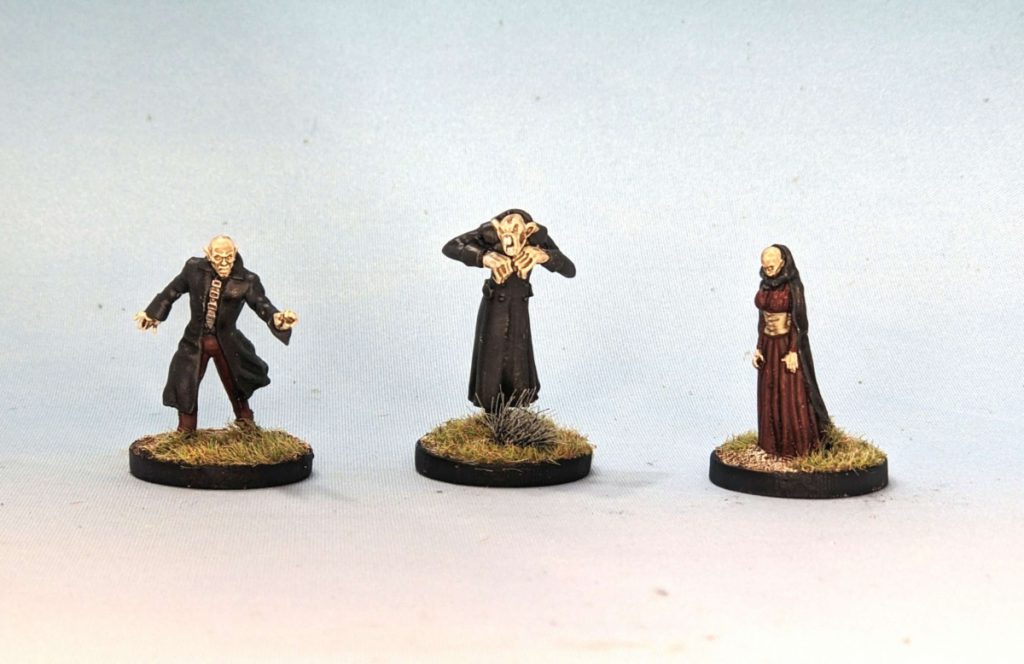
If you already have Napoleonic models, you can really use any mini to represent any specialty – but the North Star minis bring out the character and look for each soldier. Here are two sample lists I made for France and Spain:
France
- Officer (Bonus Melee, Speed, recruitment at creation) [105 Recruitment total]
- Supernatural Investigator [22]
- Occultist [20]
- Heavy Calvaryman [23]
- Vivandiere [10]
- Grenadier [15]
- Sapper [12]
Total 102
Spain
- Officer (Bonus Melee, Health, Courage) [100 Recruitment total]
- Veteran Hunter [30]
- Champion of Faith [20]
- Infantryman [10]
- Sapper [12]
- Irregular [15]
- Artillerist [10]
My lists are only seven models, but I think when I re-do them I’ll drop in some infantrymen to pad them out to eight. Along with each model come equipment sets that are usually set for that model, however you can sometimes choose an alternative (like the Highlander can choose Musket and Cartridge box OR Heavy Weapon and Pistol).
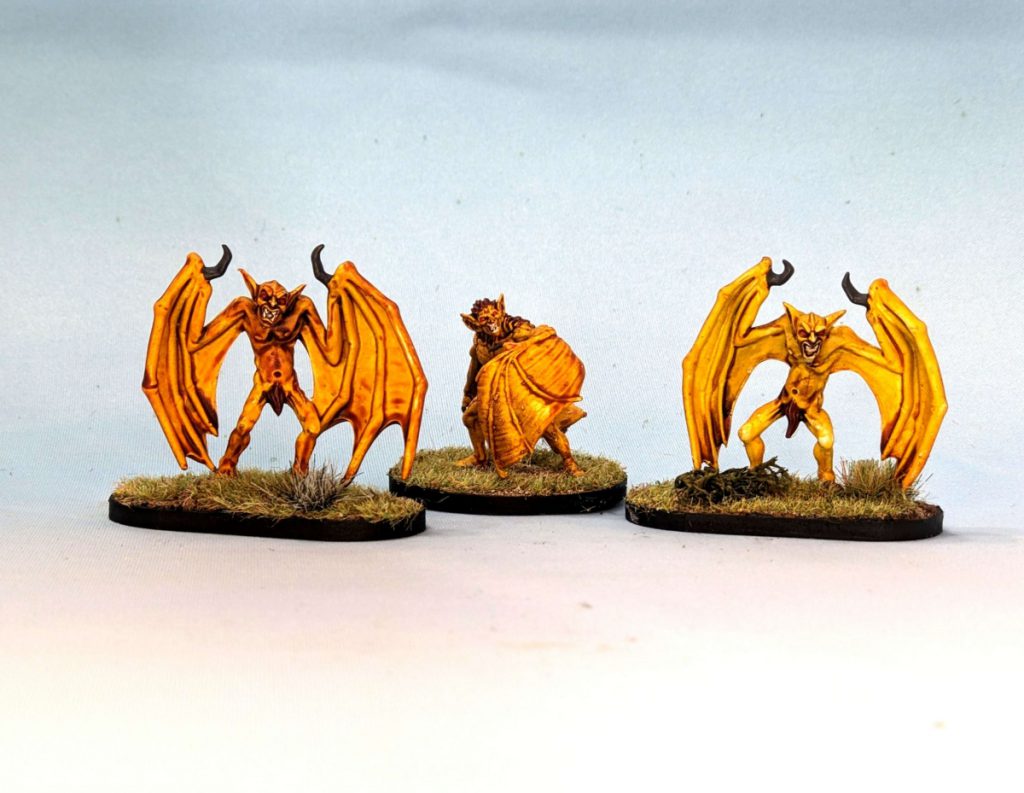
Each soldier can then choose special items that usually amount to a certain ammo type that hurts specific enemies better (like a Silver Bullet to take down a Werewolf easier). Some specialties start with special rules that enhance them – an Artillerist has the Artillerist special rule that allows them to shoot artillery pieces that are present in some scenarios.
What do the stat blocks mean?

The stat blocks are fairly simple. Speed is how far a model can move in inches – most are six, if they’re wearing a breastplate they’ll be at five. You’re only able to move at your Speed value once per activation, but you can use your second action to Sprint – you make a check, rolling two dice. If its 11 or higher, you can move a further 4″. If it’s 10 or lower, an extra 2″.
Melee is the bonus you get to your Melee attack roll. You roll one power and one skill die, add them together, then add any Melee bonus. Most good soldiers have +1, dedicated Melee guys will have +2. Enemy cryptids or monsters might have more. Accuracy is your shooting stat. It is directly in correlation to Melee except it is for shooting.
Defence is how well your soldier can avoid incoming attacks. More elite soldiers usually have 14, while regular guys will have 12 or 13. When making an attack roll, the enemy rolls two D10s, add their Melee or Accuracy to it, then compare vs your Defence number. If its equal to or higher, you’re hit. Damage is inflicted based on the type of weapon – most are Power (so you look at the Power die that was rolled and inflict that number of damage), while a few are Skill.
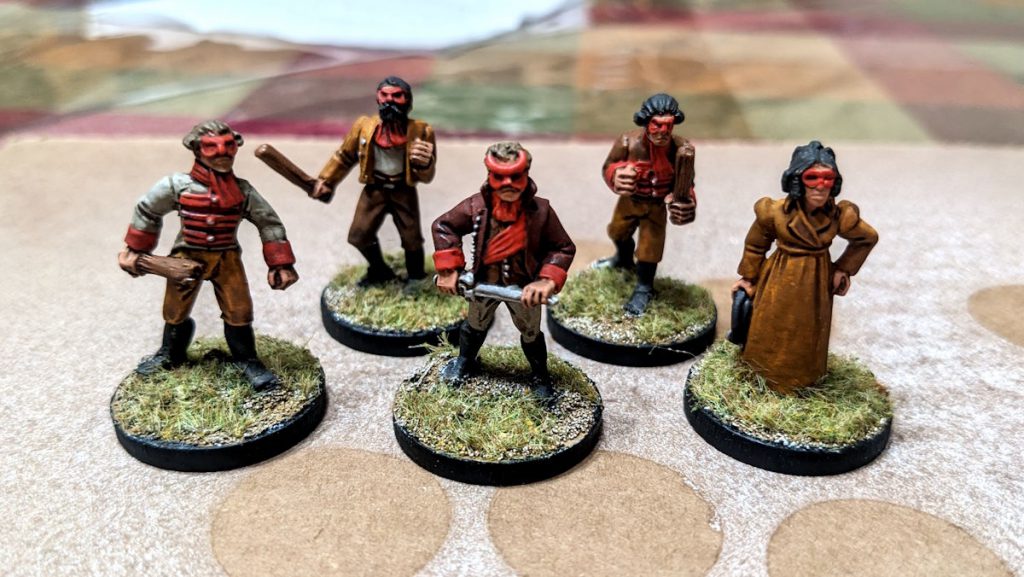
As you can tell, with an average of 11 on 2D10, plus 1 or 2, you’re going to miss often (and you’ll have other negatives, like moving or cover). It takes extra resources like re-rolls or bonuses from campaign play to hit more consistently.
Courage is the bonus you get to a Courage Check, usually vs a TN (target number) as prescribed by a scenario – like you saw the dead body of a local newspaperman chopped up and skinned. +0 is fairly common, while your more dedicated soldiers might have up to +4. You don’t want to discount this stat because once you start failing these checks really bad stuff can happen.
Health are your hit points. Run out and your soldier is gone, possibly dead. Many soldiers are 10, while some can get up to 12. With the average of a D10 being 5.5 you can see that most soldiers can take two hits.
How does it play?
You can get more of an idea of how the game plays by reading our review, but there are a few broad statements we can make about gameplay:
- It’s quick, since there are only ever a max of eight guys on either side plus some monsters. I would say most games can be done in an hour.
- It’s somewhat alternating activation – one side does half their troops, then monsters activate, then the other side does their entire warband, then the first side finishes their activations.
- You have a resource of five extra dice to start the game (called the Fate Pool) – two Power, two Skill, and one Monster die. You can use these for re-rolls and various effects.
- Cards are involved but really only to randomize scenario clues and outcomes.
- There isn’t a ton of record keeping, as individual figures don’t earn XP during a game – the warband does, and then you can distribute it how you see fit (each figure can only earn one extra point above the one they get for participating, so you can’t just build up a superhuman from the start).
- When you first play, it may seem like you’re missing a lot of shots. It’s important to close the distance so you’re not moving and shooting, and it’s important to use your Fate Pool dice to confirm big hits to do damage.
- The game is based around your unit investigating and finding out information about monsters and evil activity. You’ll spend time moving to Clue Markers and interacting with them while you’re fighting the enemy.

- Charging a figure into melee will cause the enemy to receive a Fatigue point, dropping their Defence and attack skills down by one, but also do the same to your figure. It’s important to try to put fatigue on key figures so they’re easier to hit.
- The Campaign is fun but not super in-depth. You don’t need D66 charts or tons of cards. Figures that are taken out of action in a game have a 10% chance of being killed outright and a 10% chance of going Permanently Insane from seeing something too disturbing to continue the war. There are other results for injuries and Madness, but it’s not hugely extensive. Similarly, there are nine advances each figure can get – and it takes a bit to get them – and each one usually has a choice of what stat to increase. You’re not going to be building superhumans.
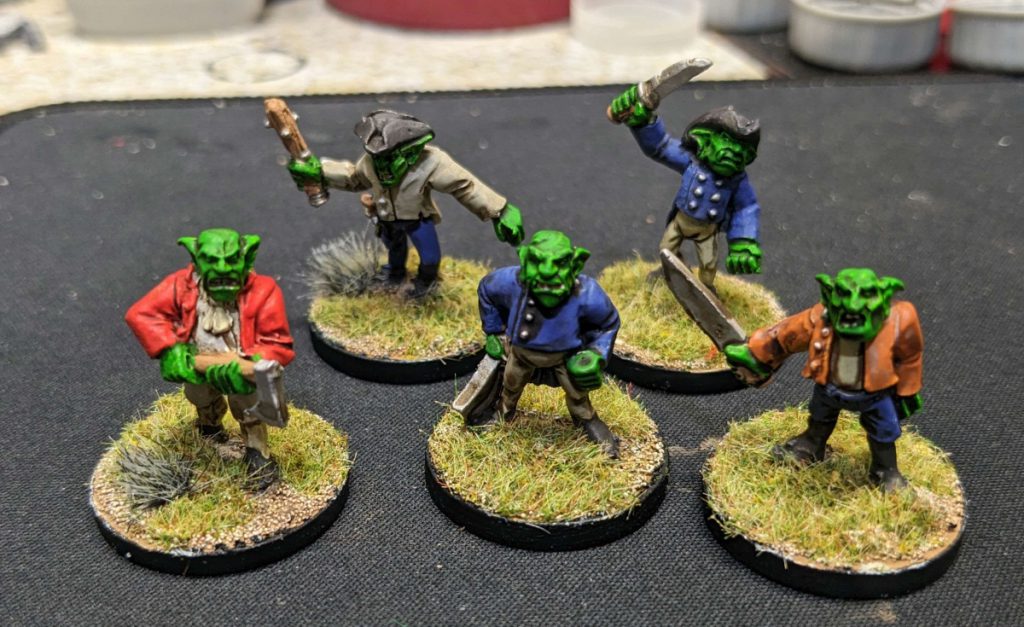
Are there issues with it?
I really don’t think so – I really like this game. The only things I’ve identified are that perhaps it could use a bit more depth on some of the Campaign stuff, and the number of monsters needed to do ALL of the scenarios can get pretty large. If you’re creating your own scenarios or playing maybe the same six every once in a while I think you’ll be okay.
Where to start (models, basing, cleanup, etc)
I’ve been collecting the units from North Star Military Figures and absolutely recommend them 110%. They’re characterful, they match the soldier types, and they’re gorgeous sculpts. They are pewter minis.
If you’re a convert from 40k or Bolt Action or another mostly-plastic game, you can still use plastics here. Our Start Collecting Guide provides an excellent overview of what minis you could buy. For around $40 you can get a big box of a ton of dudes and convert them up to be tons of different specialists.
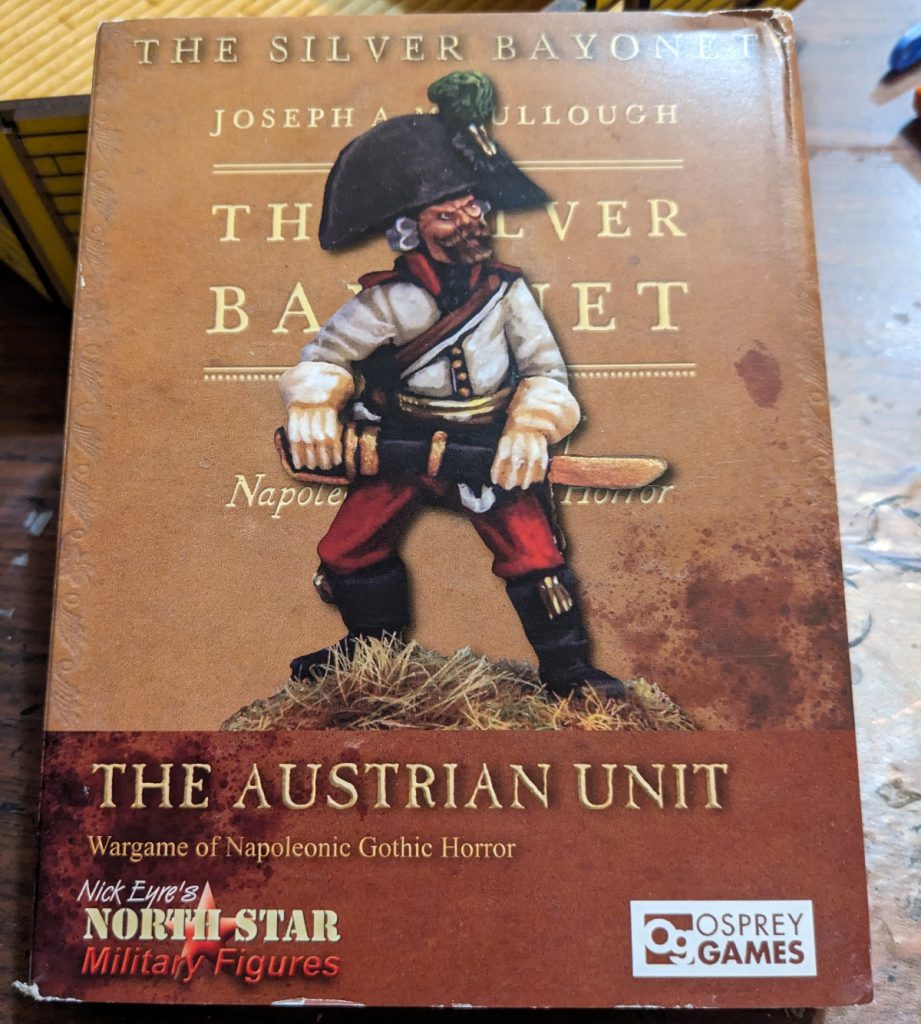
I will say one thing though – the North Star Figures units do an excellent job of including ladies and minorities into their boxes. You won’t get that through a plastic box of troops. I play this game with my son and daughter so I think it’s great for her to see representation of badass women in the game.
I also like the pewter minis overall because you’re able to get some really characterful sculpts into your unit that you can’t get so much from a plastic box with only a few poses in it. It also scratches the Oldhammer itch somewhat as you’re collecting monsters and things from lots of manufacturers that are hand-sculpted.
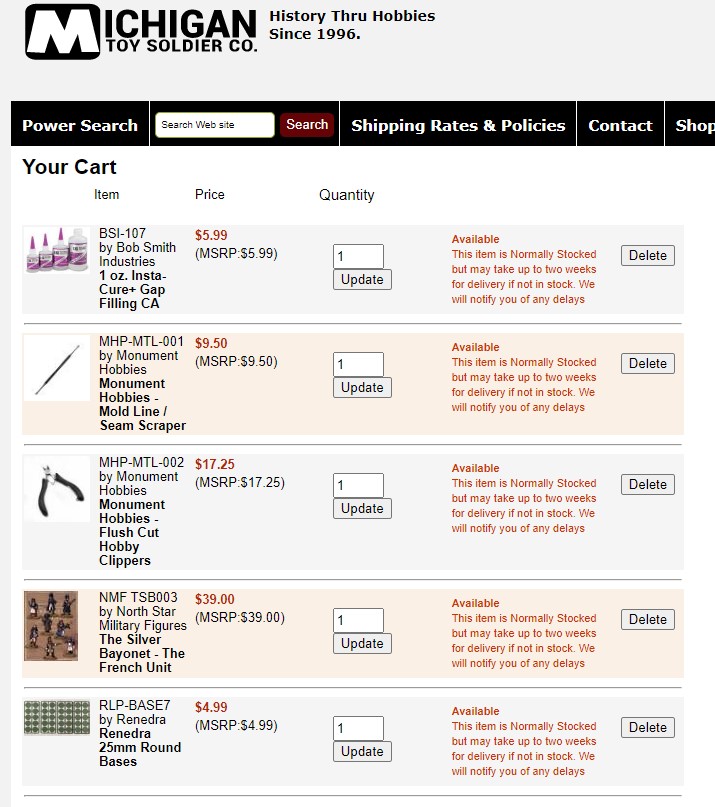
If you’ve never worked with historical minis, it’s important to know that you’ll need bases for your guys. They’re cheap and you have a lot of choice as to how you want to do it. I’ve provided a sample order of how I’d get started above – glue, nippers, and a mold line scraper are all included and we’ll get to those.
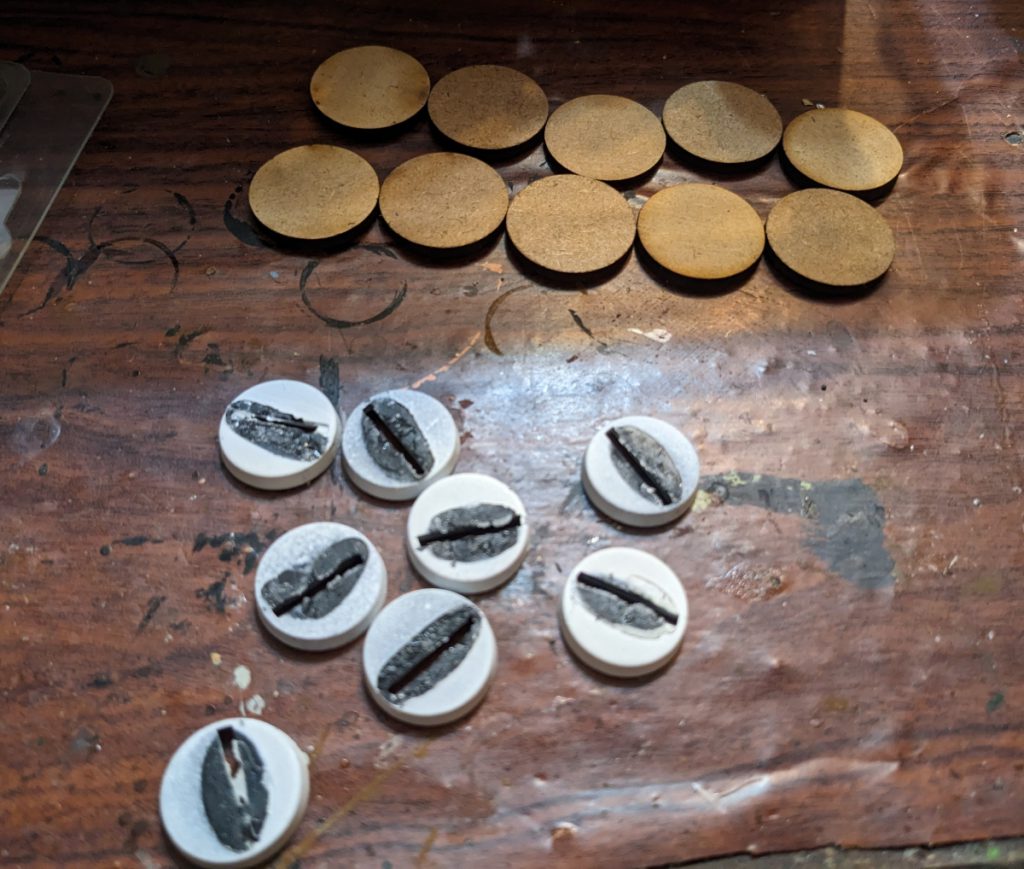
I’ve also included in the order 25mm plastic bases from Renedra. 25mm is fairly standard in terms of basing Napoleonic troops, but there is no hard and fast rule as to how you should do it. You can base them on squares if you like. I choose to do 20mm as I like how they rank up when I put them in a movement tray for games of Sharp Practice. You can choose plastic, MDF (wood, basically), or even 3D print your bases. For monsters it’s really up to you how you want to base them – I’d suggest grabbing a bunch of 25mm bases, 40mm bases, and some 60mm.
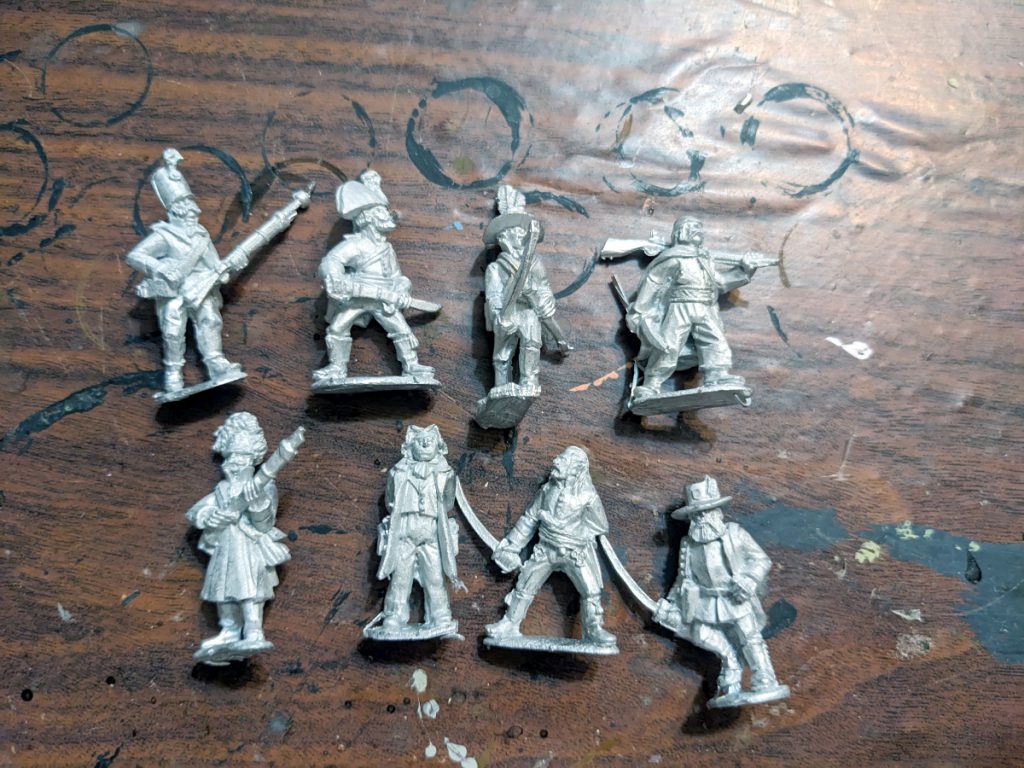
Once you’ve chosen your basing scheme, it’s important to take your minis out and look them over. You can see on my minis above that the guy in the top left has a kind of plug or something on the end of his musket – it’s an artifact from casting, how they pull it out, I assume. Nip that off then nip off any other flash on the minis (you can see it on the ones above, the flash is the extra metal that is leftover from when the minis are pulled out of the mold).
Then take your mold line scraper and remove the mold lines – these are little lines usually on the middle of the mini where the two part mold comes together and leaves a little excess pewter. Look on the faces especially, but be careful not to take off any detail. Swords will usually have a mold line down the back of the sword, tall hats will have a mold line, and shoulders and thighs are places you should definitely look at.

Once they’re clean, you can super glue them down to your bases. I make sure that if the built-in base – the pewter thing that is attached to their feet – is too big for the base, I nip it back a little. Sometimes it’s difficult as their feet are spread like the Dhampir mini on the right, but I do my best. If you’re using 25mm bases it shouldn’t be a problem at all.
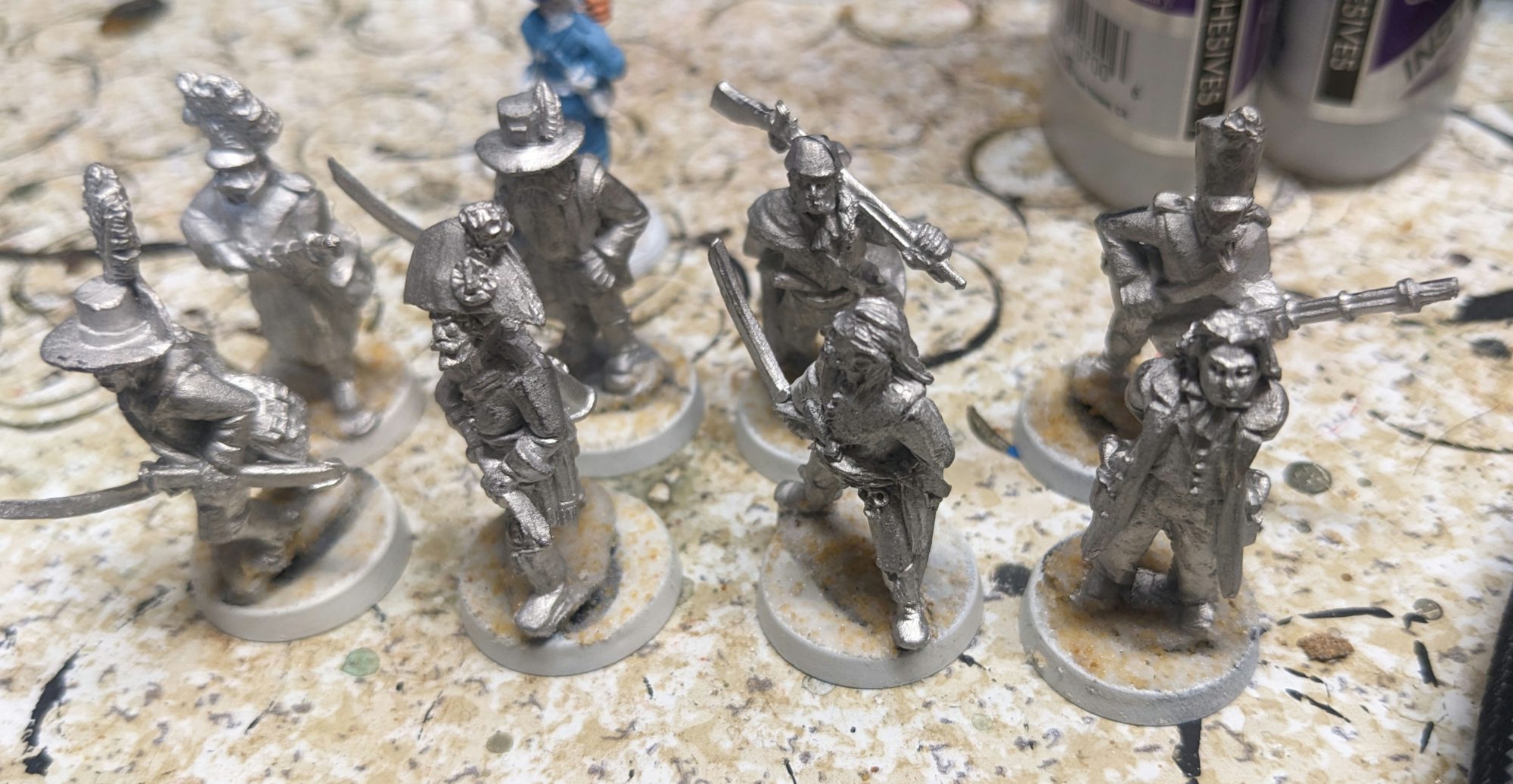
After this I take some sand and PVA glue (white Elmer’s glue) and put sand all over the base and cover the built-in base. This helps hide it a little – we’ll hide it more with flock and static grass later. Now they’re ready for priming and painting.
Tokens Needed
The game itself really doesn’t need a ton of tokens. I like tokens, so I usually use:
- reload tokens
- activated tokens to show a mini has activated
- fatigue tokens
- something to mark Health loss (I use small D6)
- clue markers – the places where you’ll go to investigate and find monsters. Six is a good number
You can either make these yourself or find them from a lot of different sources either as MDF or Acrylic.
What Terrain Should I Get?
A 3×3 mat, a bunch of trees, some buildings, and scatter terrain like fences and hay piles should be great. Some scenarios ask for specific terrain, but I feel you can abstract it a bit with substitutions.
Enemy List
There are a lot of different monsters available in the scenarios – what I would suggest is maybe pick out a dozen monsters you’d like to face and start with those. It might be five bandits, two black dogs, and five dark wolves. This was uploaded to the Facebook group that shows you what you need to do the scenarios from the main rulebook:
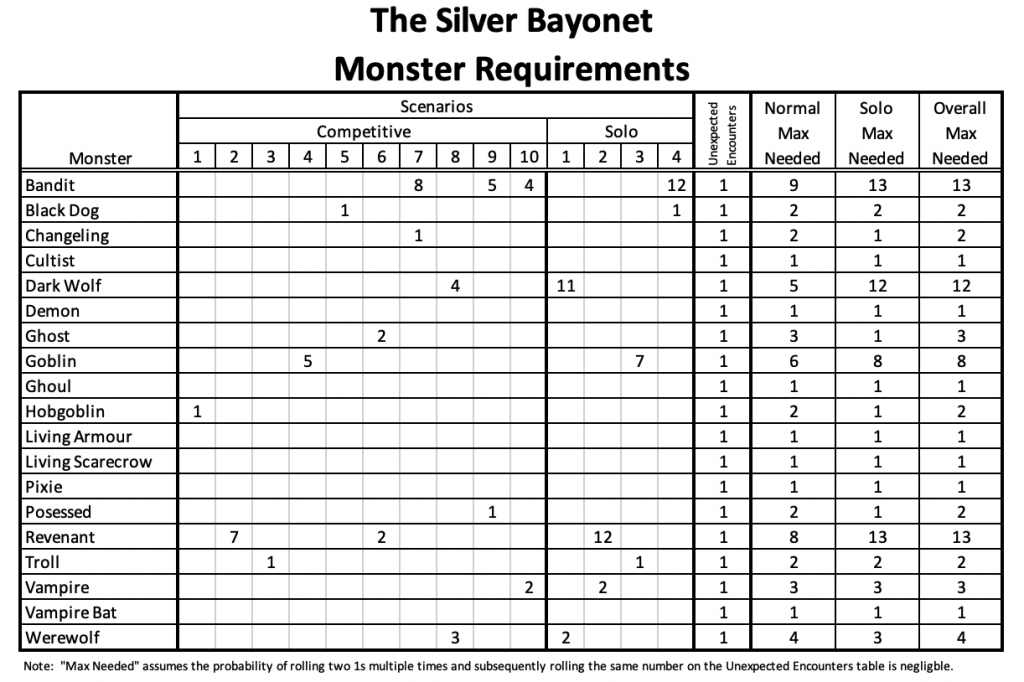
Social Media Communities
There is an excellent, very positive Facebook group here. Lots of files are available there that will help you get started, like unit rosters and cheat sheets. The Gothic Horror section of Lead Adventure is an excellent resource for painting advice, miniature sourcing, and battle reports. BoardGameGeek has a small but useful section for the game as well. There is an active subreddit here.
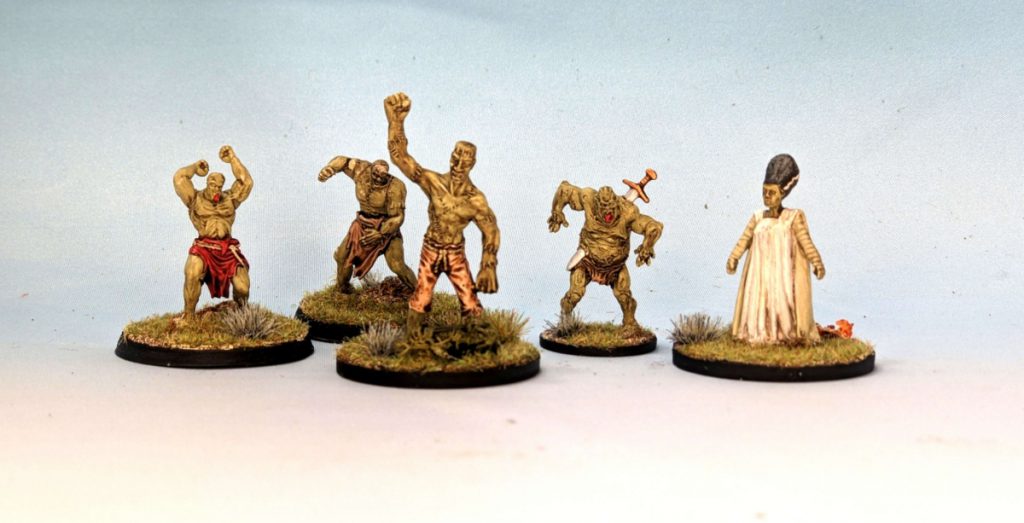
What’s next?
I really hope this has been a good resource to get started – as I think of details I’m going to keep adding to this page so new players don’t blunder their way into the game. We’re planning to continue coverage with scenarios, battle reports, and faction guides. I’m also running an event day at AdeptiCon in March, so definitely look out for a lot of progress on that!
Questions? Comments? Find something we may have missed for new players? Comment below or send it to contact@goonhammer.com. Thanks for reading!
